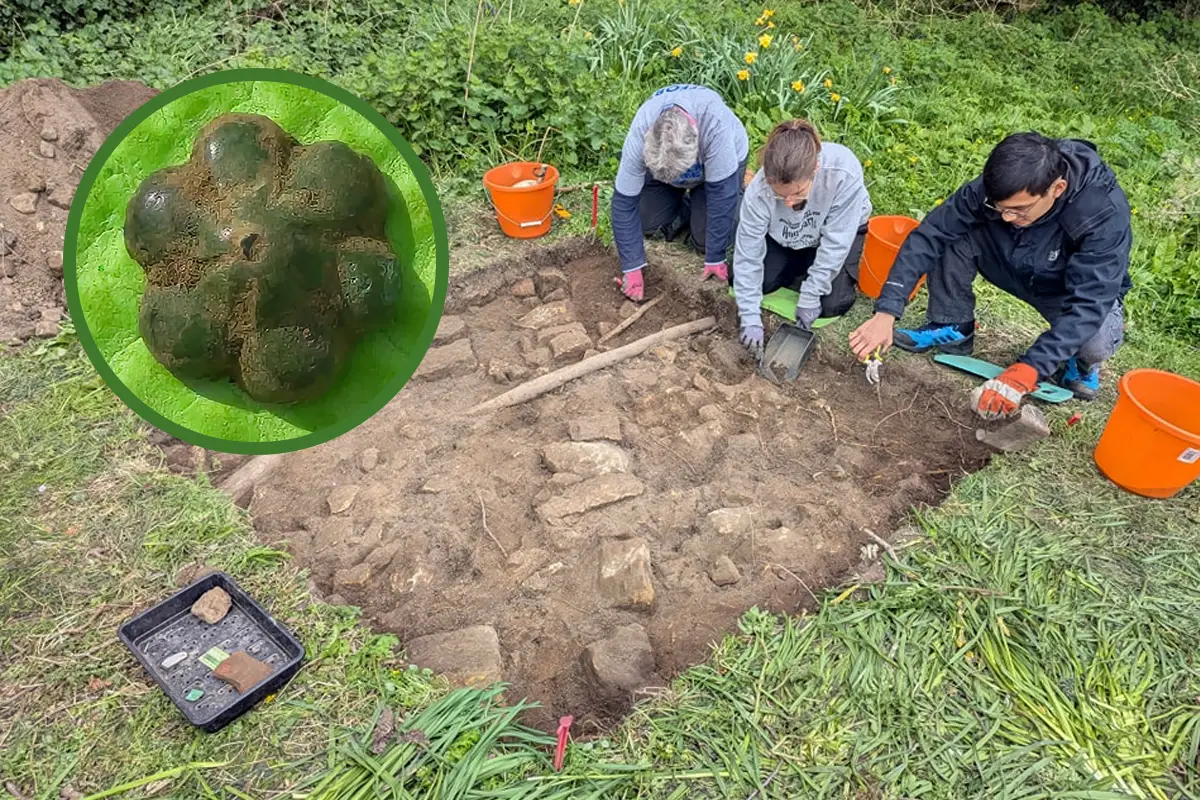Archaeologists have made several new discoveries from the late medieval period during excavations in the Yorkshire village of Huttons Ambo, England.
Conducted over the Easter weekend, the excavation is a community-led project overseen by Ethos Heritage CIC.
Previous studies around the village have uncovered Roman and Medieval pottery, traces of structures and earthworks, animal bones, and objects from the Bronze and Neolithic periods, confirming human occupation in the area from at least 6,000 years ago.
In the latest season, excavations focused on a large building platform identified during an archaeological survey. The building measures at least seven metres in length, however, the full dimensions at yet to be determined once the side walls have been fully exposed.
Early indications suggest it may have been a two-storey structure from the late medieval period, built from locally quarried stone bonded with lime mortar.
Among the notable finds are a finely crafted 14th-century horse mount, pottery shards dating from the 11th to 15th centuries, as well as a large quantity of butchered animal bones. These finds provide valuable insights into the area’s diet, economy, and social history across several centuries.
Richard Coates, representing Ethos Heritage, said:
“The discoveries made during this year’s excavation are both exciting and significant. The building’s unusual construction method and scale suggest it held importance within the medieval settlement, and the discovery of the 14th-century horse mount alongside centuries of pottery and animal bone paint a vivid picture of village life in Huttons Ambo. We’re eager to carry out further excavation and analysis to better understand its story.”
Ethos Heritage is now preparing for a major three-week excavation in the village, taking place between 18 July and 8 August 2025. This extended dig will explore the newly uncovered building, alongside other medieval structures and archaeological features identified in earlier investigations.
Header Image Credit : Ethos Heritage CIC
Sources : Ethos Heritage CIC





